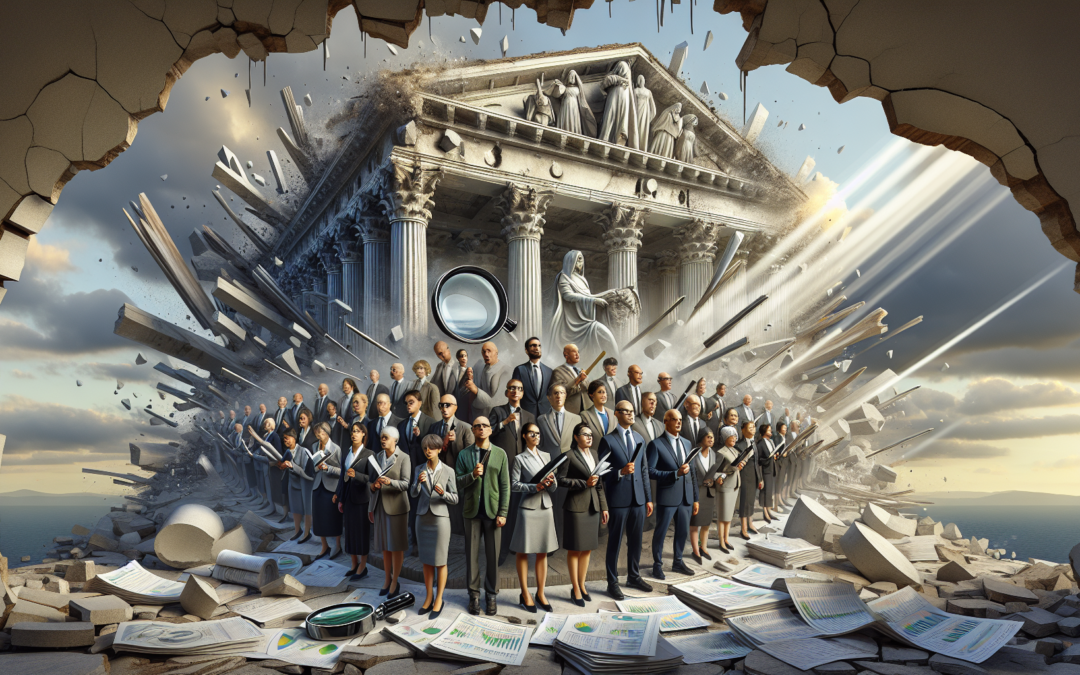Unmasking Misunderstandings: The Blue’s Silent Scream
In the digital age, where opacity is challenged, the patrol cars and precinct desks are no longer mere symbols of local service—they are at the epicenter of a national debate. In this debate, each officer stands as both a shield-bearer against chaos and a target for those seeking unfiltered accessibility. As cameras and live feeds become ubiquitous, the lives of the men and women in blue are laid bare, their every action a potential headline or viral clip.
Commitment: The Quiet Stalwart
For most officers, the call to service is not a thirst for power, but a commitment to protect. It is in the morning routines, the quiet moments before the shift starts, as families say goodbye with unspoken hope—the hope that the badge will come home safely. There is a deep dedication that the public often overlooks or romanticizes. Officers step into uniforms sewn tightly with the fibers of duty, embracing risk and unpredictability with all the composure they can muster.
Their actions are motivated by an earnest desire to uphold peace, yet under the lens of First Amendment activism, these same actions can be misconstrued as oppressive. The cameras wielded by modern-day activists pierce through their blue armor, leaving fragments of truth entwined with perceptions of hostility.
When Intent Misleads Perception
The schism between officers and the public—particularly the self-proclaimed defenders of freedom—stems from misaligned perceptions. While most police encounters are routine, a select few are elevated into confrontation. The aim of preserving civility often ends up tangled in a narrative born out of that very scrutiny. Officers find themselves patrolling not only streets but also a new realm of public relations and media navigation, where pause and articulation weigh heavier than the tools on their utility belts.
Thus, the gauntlet is thrown—not just on crime-infested blocks, but also on the battlegrounds for narrative control. Contemporary activists click record, wielding their devices as truth arbiters. Yet the truth is nuanced, multi-layered, composed of quick judgments and situational demands that not readily unfold via viral seconds.
Underlining Sacrifice and Soul
There exists a profound discourse—the invisible sacrifice of peace and comfort by the officers who faithfully patrol our streets. Beyond their steady exteriors exists a humanity that bleeds, tires, and hopes. Fathers, mothers, brothers, and sisters strive not for public adulation, but for an opportunity to see a marginally safer world after their shift. Their badges rest upon bruised chests that neither headlines nor critics apprise.
While cameras print judgments in pixels, officers are left fighting more than crime; they are forced to combat detractors painting thin strokes of misconduct onto a grand canvas of commitment.
What can feel like media persecution obscures these officers’ nobility and complicates their reality, turning lovelorn ideals of civic transparency into a battle they did not enlist for.
Duty Demystified
Ironically, the very act of filming police activities—intended as a mechanism for transparency—becomes a dual-edged sword. While accountability is paramount, stripping actions from critical context erodes the understanding required for a civilized discourse about reform versus absolutism.
In the unraveling confrontation between advocacy and preservation, officers hold steadfast to their anthems of courage and fidelity. Embedded within their roles is an inherent understanding of risk—risk they navigate daily along with the anticipations of serving an impartial law that graces no allegiance to personal bias.
Despite these confrontations, the uniformed peacekeepers remain pillars in their communities. They are individuals impassioned not by villainy labels, but by a resolve to endear protection unto doors not yet known to them, driven by the constant hum of sworn vortices in the backdrop of their duty.
Bridging Conversations
The quest for transparency need not be adversarial if vested within a realm of authentic dialogue. Communication can be fostered through a dual appreciation for both the bravery displayed and the broader essence of systemic reform. By reinforcing respect for personal sacrifice and respecting their oath to serve and protect, a connection can surface—one beneficial not solely for law enforcers, but for those critical of the institution as well.
Towards Unity
John Ligato delves deeper into these dynamic interactions with precision and balance on The John Ligato Show. His insights cultivate a field of understanding that transcends mere narrative, highlighting those precarious junctures officers navigate alongside their public critics. Tune into these real narratives, where the heartbeats felt behind the blue are humanized rather than starkly caricatured. By subscribing to the YouTube channel, witnessing perspectives from the line of duty on Facebook, or watching meaningful representations here, we can begin to dissect our shared narratives untangled from misinterpretations and woven into a collective understanding.
In the quest for truth and alignment, the creed should remain mutual respect, enabling both relationships and ideologies to flourish beyond cynical stereotypes. It is through understanding the tapestry of valor threaded by the inconvenient yet relentless resilience of policing duties, juxtaposed against so much skepticism, that real progress can be realized.

Recent Comments